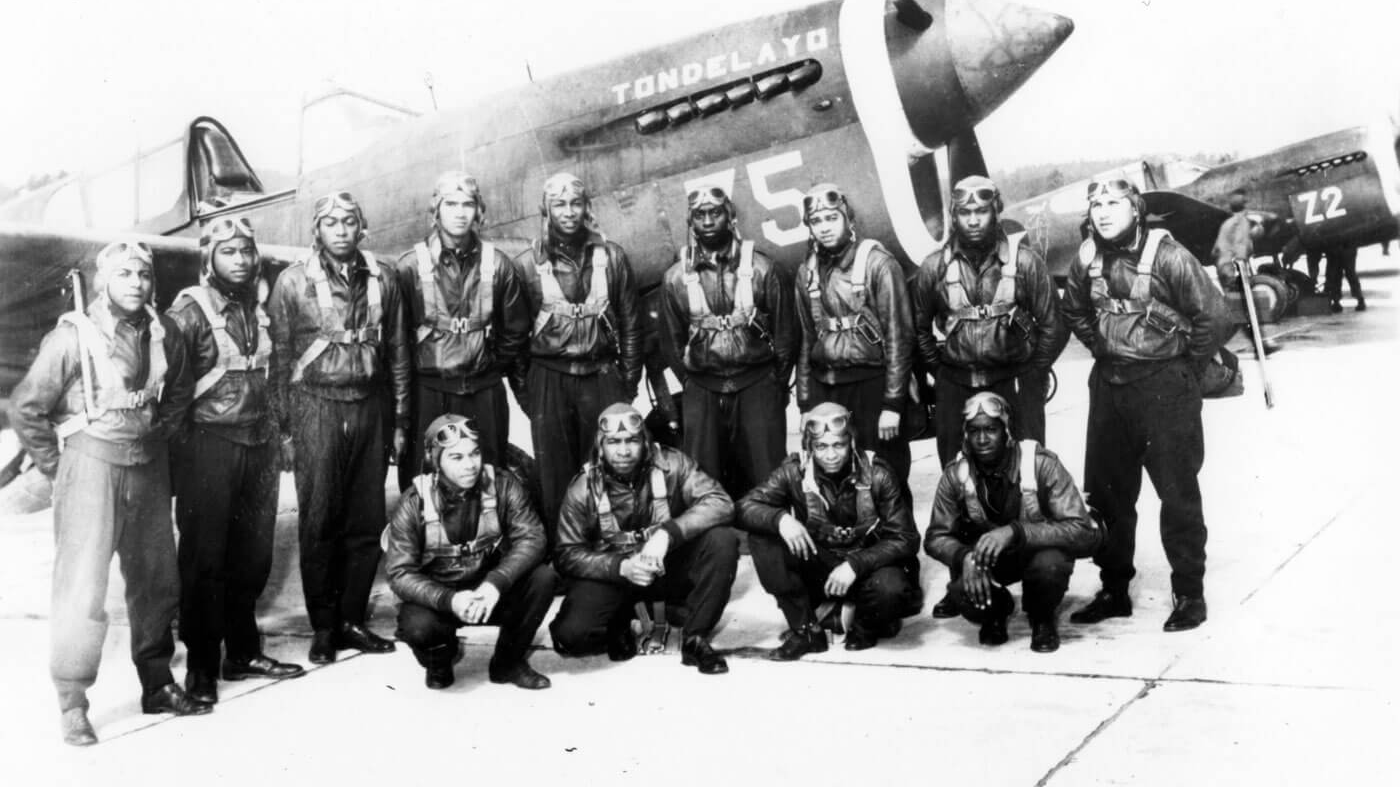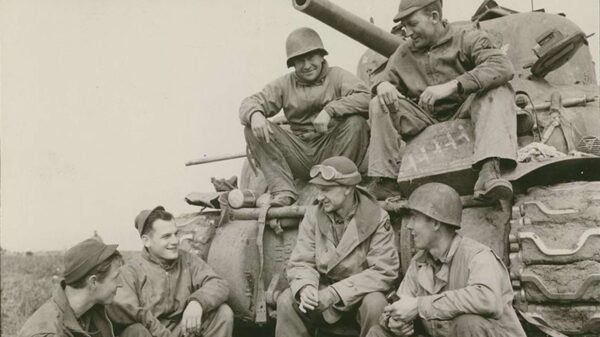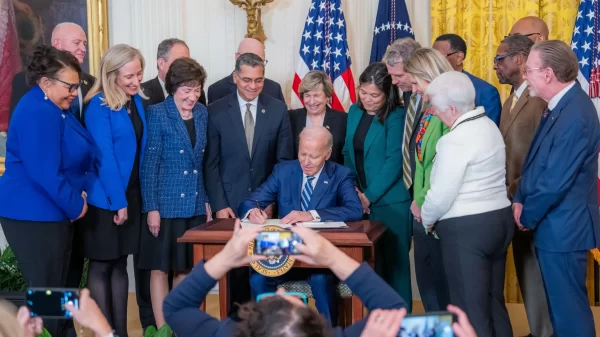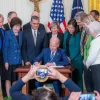February is Black History Month and as part of that remembrance, President Joe Biden and Vice President Kamala Harris recently visited the hall honoring the long history of Black Americans fighting for this country, “even when their contributions were not always recognized or honored appropriately.”
Included in his comments were the Tuskegee Airmen who were Black fighter pilots trained in then-segregated Alabama to fight in the skies over Europe during World War II.
“Imagine the incredible love it must have taken for the proud Tuskegee Airmen to fly more than 15,000 sorties in battle, when their own freedom was not fully realized in their own country,” Biden said.
Biden also honored the “free and enslaved descendants of Africans who fought with the colonial forces in our revolution; to the black regiments that joined to fight for the Union and for their own freedom in the Civil War; to the Buffalo soldiers, including Henry O. Flipper, the first African American graduate of West Point; and Cathay Williams, the first African American woman — Cathay — who enlisted in the United States Army.”
Biden also honored the bravery of the 22 African Americans awarded the Medal of Honor for their service in the Vietnam War “while struggling for civil rights at home was continuing,” among others.
“Right now, more than 40 percent of our active-duty forces are people of color,” Biden said. “And it’s long past time that the full diversity and full strength of our force is reflected at every level of this Department, including our Secretary of Defense.”
Biden is referring there to Mobile native and Auburn graduate retired General Lloyd Austin, the first Black secretary of defense, who was recently confirmed with broad bipartisan support.
At the time that the Tuskegee Airmen was authorized, some senior members of the U.S. Army Air Corps questioned whether or not Black Americans had the mental acuity to be pilots. The program was originally referred to as the “Tuskegee Military Experiment.”
The Tuskegee Airmen began with the first aviation class of 13 cadets in July 19, 1941. Ground school training covered subjects including meteorology, navigation and instruments. Basic flying training consisted of both ground school and flying training in military aircraft. The Air Corps provided aircraft, textbooks, pilot and mechanic uniforms, and parachutes. Tuskegee Institute furnished the facilities for both the aircraft and personnel.
Successful cadets then transferred to the segregated Tuskegee Army Air Field to complete the Army Air Corps pilot training. The Army Air Corps provided facilities, equipment and supplies for men and planes at TAAF, the largest of the flying training bases. Lt. Col. Noel F. Parrish served as the base commander from 1942 to 1946. The program was expanded during the war to become the center for Black aviation. TAAF would continue to train new airmen until 1946. A total of 993 pilots graduated through TAAF between 1942 and 1946. The first Black flying unit was originally called the 99th Pursuit Squadron. It became active in March 1941 and was later renamed as the 99th Flying Training Squadron.
The Tuskegee Airmen flew more than 1,200 missions for the 99th, 100th, 301st and 302nd Fighter Squadrons under the Twelfth Air Force. The 332nd Fighter Group flew at least 312 missions for the Fifteenth Air Force between early June 1944 and May 1945. The pilots of the 332nd Fighter Group painted the tails of their P-47s and later, P-51s, red. They were then nicknamed “Red Tails.” The “Red Tails” continue to exist today, based out of Montgomery.
The 99th Fighter Squadron and the 332nd Fighter Group had a total of 112 aerial victories during World War II. Ninety-six Distinguished Flying Crosses were awarded to members of the 332nd Fighter Group or its squadrons. The 332nd Fighter Group shot down enemy aircraft on 21 missions for the Fifteenth Air Force. During the war, Tuskegee Airmen flew the P-40, P-39, P-47 and the P-51 Mustang. Four Tuskegee Airmen earned three aerial victory credits in one day: Joseph Elsberry, Clarence Lester, Lee Archer and Harry Stewart.
Four is the highest number of aerial victory credits scored by a Tuskegee Airman. Three Tuskegee Airmen earned that number of aerial victories: Lee Archer, Joseph Elsberry and Edward Toppins.
The 99th Fighter Squadron earned three Distinguished Unit Citations, and the 332nd Fighter Group earned one. The 99th Fighter Squadron earned two Distinguished Unit Citations before it was assigned to the 332nd Fighter Group.
Because the services were segregated during World War II, experienced Tuskegee airmen could not transfer out to be squadron commanders or wing commanders for the more numerous white Army Air Corps squadrons, who often were short of experienced personnel to select from. This limited chances for promotion for the Tuskegee Airmen, which sometimes hurt morale. The United States Air Force did not desegregate until 1949.



















































